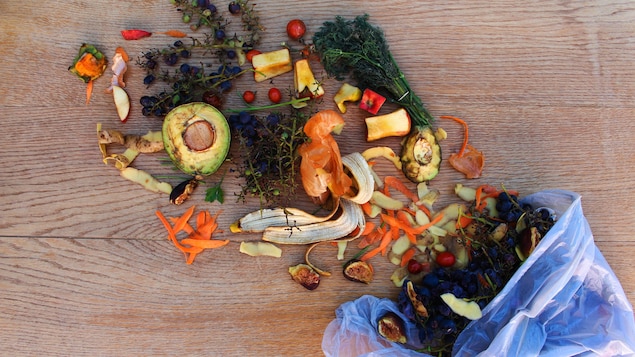These services are still in their infancy. AI advances at breakneck speed every day. The beginning of a small revolution, imagines Guillaume Mathieu, a strategist in the management of agri-food brands, who is very interested in artificial intelligence.
ChatGPT arrived in our lives last November, the expert points out. People have got used to using it and seeing what an endless world of possibilities it is.
As with Google, it is also possible with ChatGPT to request recipe ideas. However, the chatbot does not link to a list of well-referenced websites. It generates its own response.
It will deal with all the information that has been fed to it and offer you an answer, explains Guillaume Mathieu. In the case of an osso buco recipe, he looks at all the recipes available online and invents his recipe, which he thinks will be optimized.
Good to know
ChatGPT cannot dive into current newsletters as it uses data older than 2021. According to our tests, the paid version of ChatGPT ($20/month) connected to the internet is no longer able to find grocery discounts. Therefore, it is still necessary to consult the good old circulars.
An anti-litter robot
We suggested to Chief Sustainable Food Advisor Bobby Grégoire that they test ChatGPT. He asked her to submit a recipe with various end-of-life ingredients: fiddleheads, avocado, cherry tomatoes and cucumbers, and added one difficulty: coconut. As a result, ChatGPT simply offered a salad made up of all of these ingredients. In short, a simple Touski.
“We can clearly see that while ChatGPT has certain tastes, the fine understanding of what fits together, what a deal is, is not there at all.” »
– A quote from Bobby Grégoire, chef and consultant on sustainable food
For his part, the strategist Guillaume Mathieu, who has also tested ChatGPT in the kitchen, is convinced that the best use is currently more of an inspiration base than anything else.
The advantage of ChatGPT is that it works in conversational mode. We can therefore ask him to refine a recipe without him forcing us into a new recipe with ingredients that we don’t have on hand.
Sometimes ChatGPT is wrong. We asked him how to ripen an avocado quickly. He offered to put it in the oven at 350°F for 15 minutes, wrapped in aluminum foil. The result: a total failure.
A friendly boss Touski
Inspired by the development of ChatGPT, Dave Tremblay, an entrepreneur from Val-d’Or, Abitibi founded ChefTouski, a platform to combat food waste.
Its virtual chef is based on ChatGPT. The only thing is that we only have a connection to the kitchen. If your question has nothing to do with the kitchen, he will not answer us. He really is a chef in his own right, explains Mr Tremblay, stating that his conversational robot has been programmed with the aim of avoiding waste.
ChefTouski’s fridge freezer makes cooking leftovers easy.
Photo: Radio Canada
To this he added another service, emptying the fridge: you just have to choose the ingredients and their quantities for the AI to generate a recipe. A tool appreciated by our chief adviser Bobby Grégoire.
I enjoyed using this tool, it is very user-friendly and easy to use. There is also a creativity index for the different recipes or dishes offered. The more conservative we stay, the more recipes we have that are probably simple and already work, a bit like we would find on Savor, Mordu or Ricardo websites.
In the free version of ChefTouski you can use the virtual chef ten times a month and the empty fridge unlimited.
Let’s cook inflation at your service
Winnipeg delivery service SKIP hired Dentsu Création to develop a website that could help consumers optimize their purchases based on grocery prices.
This is how Cuisinons l’inflation was born, a service that shows a list of foodstuffs that are falling in price and those that are rising for a specific province every week. Artificial intelligence is responsible for creating seven recipes based on the currently most frugal foods.
Recipes and photos for Cooking Inflation were generated by artificial intelligence.
Photo: Radio Canada
Depending on the budget and the size of the family, we use ChatGPT, which generates revenue, explains Rafik Belmesk, Chief Strategic Officer at Dentsu Création.
“The big advantage of using AI is speed, because we still generate seven recipes per week and for each basket. »
– A quote from Rafik Belmesk, Chief Strategic Officer, Dentsu Creation
As proof that AI is not perfect, Cuisinons l’inflation also relies on kitchen professionals. “We have a chef and a nutritionist who revisit the recipes to make sure they’re not just artificial intelligence, they’re recipes that make sense,” explains Rafik Belmesk. Recipe photos are also AI generated.
With Cooking Inflation, you can shop for groceries on sale and have them delivered by Skip Express Lane. This service is offered in certain sectors of about fifteen Canadian cities, but not yet in Quebec.
However, strategist Guillaume Mathieu has some reservations. It’s an interesting tool in that it tells us which product is cheaper than the previous week. On the other hand, they direct us to a single source of purchase. The really interesting thing about a tool like this would be that it gives us access to the promotions of all the grocery chains available.
Guillaume Mathieu concludes: When artificial intelligence is connected to our refrigerators and pantries and they see in real time the products we have left, it becomes an extraordinary tool because they automatically offer us meals and solutions to avoid food waste.

